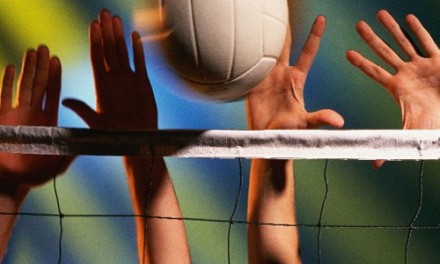
Volleyball
These areas are your core, certain areas of your upper body, and your feet.
A strong core is essential for jumping high as it helps improve movement efficiency, balance, body control, power output, and reduces the chances of injury.
I would like to provide the following guidelines that you should follow in order to maximize the benefits from your training time.
Core Training Rule 1: Always include some form of plank exercise to assist in developing stability. These include the obvious planks and side planks.
Core Training Rule 2: Wherever possible use weighted exercises. A good rule of thumb for core strength training is if you can perform more than 8-12 reps then you need to add greater resistance.
Core Training Rule 3: Wherever possible perform your core training in an upright position. This is more of a sports specific method of core training. This might include exercises such as standing weighted crunches using a cables or bands, hanging leg raises, and medicine ball slams.
Using these 3 rules your core training needn’t be too complex. Simply pick 3 exercises, and perform 3 sets each making sure you keep trying to add resistance when you meet the time or rep goals to ensure you are getting stronger.
UPPER BODY TRAINING
From a pure vertical jump improvement point of view you do not need to go overboard with the upper body training. The upper body only contributes a small percentage to your jump height and it already gets a lot of indirect stimulus from your regular jump training.
The key areas to focus on are the back and shoulders. The following vertical jump centric upper body session can be included into your training once a week as follows:
Chin Ups – 3 x 6 reps
Inverted Rows – 3 x 6 reps
Standing DB Push Press – 3 x 6 reps
Front DB Deltoid Raises – 3 x 6 reps
*DB stands for Dumbbell
For all exercises rest 90 seconds between sets. Once you can complete 6 reps for all 3 sets then start adding extra resistance via a weight belt or vest, or heavier dumbbells. It specifically focuses only on the key upper body muscle groups that directly relate to jumping.
FEET TRAINING
This may seem like an odd thing to include here but if you have spent your whole life playing and training in shoes that have a lot of padding there is a pretty good chance that your feet are not functioning properly and you will be losing quite a lot of inches on your jump height because of it.
The solution is to train barefoot. What this does is that it makes you more aware of a shift in your centre which gets your glutes, core and the smaller muscles in your feet and legs activated. Regular barefoot work also helps improve postural alignment, balance, and bio-mechanics.
If your gym does allow you to train barefoot, go for it. Deadlift, squats, and kettlebell swings are all great barefoot exercises. Other ways to incorporate barefoot work is to simply walk around without shoes on more often.